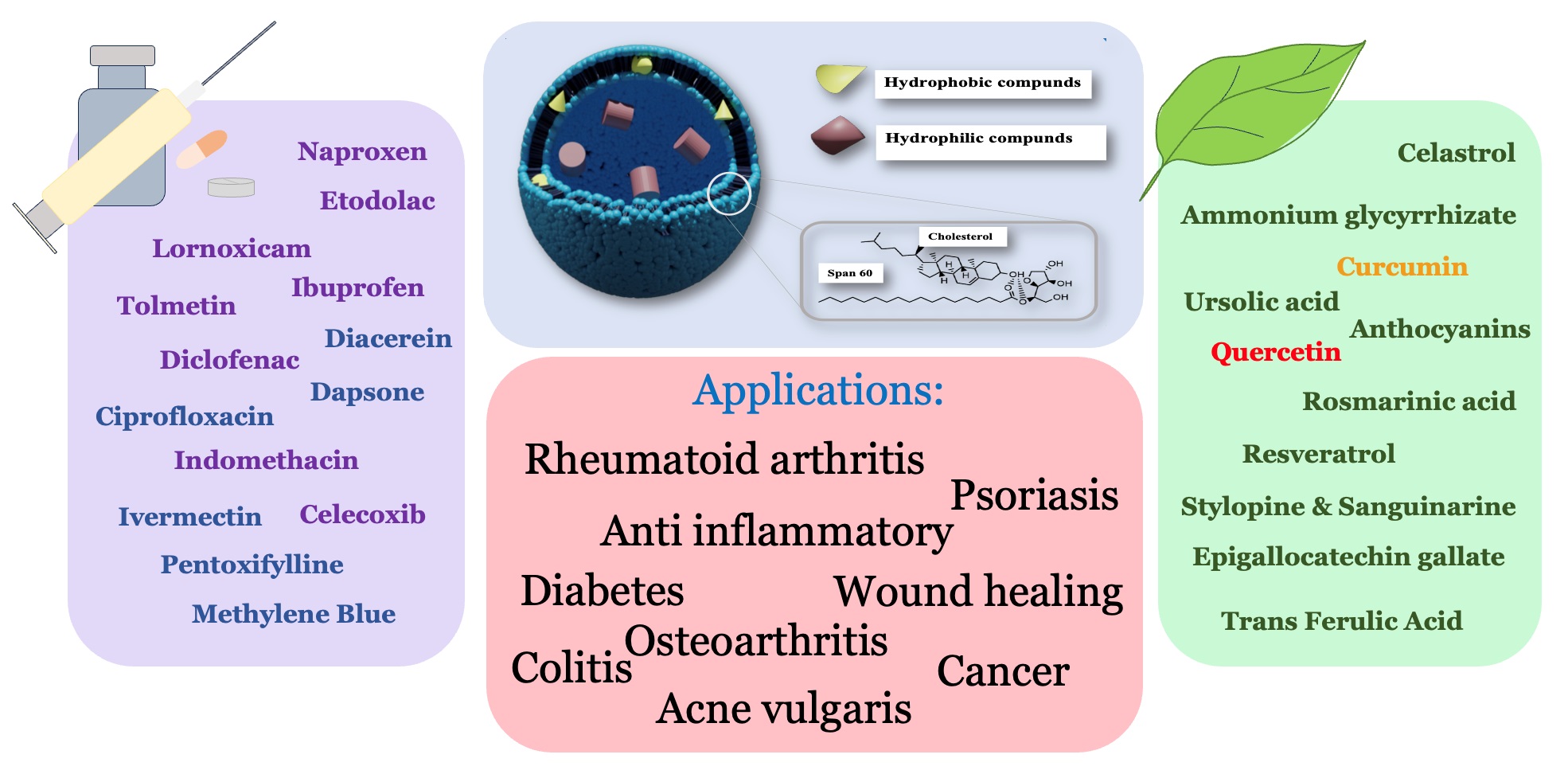Niosome as a promising tool for increasing the effectiveness of anti-inflammatory compounds
DOI:
https://doi.org/10.17179/excli2023-6868Keywords:
anti-inflammatory, niosome, NSAIDs, vesicle, non-ionic surfactantAbstract
Niosomes are drug delivery systems with widespread applications in pharmaceutical research and the cosmetic industry. Niosomes are vesicles of one or more bilayers made of non-ionic surfactants, cholesterol, and charge inducers. Because of their bilayer characteristics, similar to liposomes, niosomes can be loaded with lipophilic and hydrophilic cargos. Therefore, they are more stable and cheaper in preparation than liposomes. They can be classified into four categories according to their sizes and structures, namely small unilamellar vesicles (SUVs), large unilamellar vesicles (LUVs,), multilamellar vesicles (MLVs), and multivesicular vesicles (MVVs). There are many methods for niosome preparation, such as thin-film hydration, solvent injection, and heating method. The current study focuses on the preparation methods and pharmacological effects of niosomes loaded with natural and chemical anti-inflammatory compounds in kinds of literature during the past decade. We found that most research was carried out to load anti-inflammatory agents like non-steroidal anti-inflammatory drugs (NSAIDs) into niosome vesicles. The studies revealed that niosomes could improve anti-inflammatory agents' physicochemical properties, including solubility, cellular uptake, stability, encapsulation, drug release and liberation, efficiency, and oral bioavailability or topical absorption.

Downloads
Published
How to Cite
License
Copyright (c) 2024 Mohammad Saleh Fadaei, Mohammad Reza Fadaei, Amir Emad Kheirieh, Pouria Rahmanian-Devin, Mohammad Mahdi Dabbaghi, Kiarash Nazari Tavallaei, Abouzar Shafaghi, Hooman Hatami, Vafa Baradaran Rahimi, Ali Nokhodchi, Vahid Reza Askari

This work is licensed under a Creative Commons Attribution 4.0 International License.
Authors who publish in this journal agree to the following terms:
- The authors keep the copyright and grant the journal the right of first publication under the terms of the Creative Commons Attribution license, CC BY 4.0. This licencse permits unrestricted use, distribution and reproduction in any medium, provided that the original work is properly cited.
- The use of general descriptive names, trade names, trademarks, and so forth in this publication, even if not specifically identified, does not imply that these names are not protected by the relevant laws and regulations.
- Because the advice and information in this journal are believed to be true and accurate at the time of publication, neither the authors, the editors, nor the publisher accept any legal responsibility for any errors or omissions presented in the publication. The publisher makes no guarantee, express or implied, with respect to the material contained herein.
- The authors can enter into additional contracts for the non-exclusive distribution of the journal's published version by citing the initial publication in this journal (e.g. publishing in an institutional repository or in a book).





